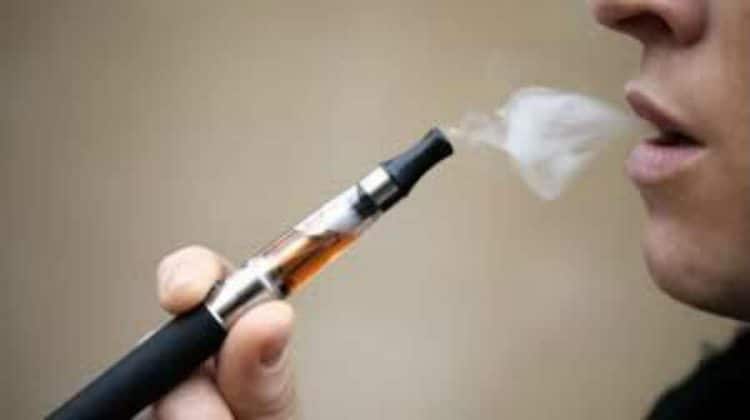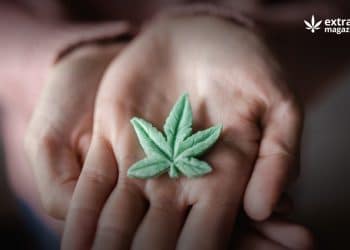Since the dawn of concentrates, dabbing and vaping have been the two main contenders for the throne of the safest method of cannabis consumption. And as with extraction methods and cannabis types, choosing an undisputed winner might be next to impossible. Nevertheless, looking out for certain factors can bring you as close to absolute safety as possible.
Conductive Heating vs Convective Heating
This constitutes the main difference between dabbing and vaping in terms of a health risk standpoint. Conductive heating is the direct combustion of the plant material, whatever it may be. (1) In the case of vaporizers, the cannabis material can be heated on a hot plate directly to release vapor. With dab rigs, however, the hot nail used to heat the wax or shatter serves as the hot plate. This causes direct combustion which respectively leads to charring that isn’t healthy for the body.
“Dabbing may be less harmful than smoking,” explained Seibo Shen of VapeXhale, “but it’s still not vaporizing. When you’re heating the Ti nail to 900 to 1000 degrees and you’re dropping some oils onto it and watching it sizzle, that pad is getting hotter than a frying pan when you’re frying your food. Those char marks that are created, that’s combustion. That is also what happens when you use combustion to heat concentrates for dabbing.” (2)
Convective heating, on the other hand, uses an electronic mechanism to heat air. The air is like a filter, a middleman between the heating agent and the plant material. Once it reaches a certain temperature, the air heats the cannabis material and turns it into vapor without charring it, making for a purest form of consumable cannabis.
This battle is generally won by vaping as it is the method that makes better use of convective heating, as long as your vaporizer employs this method, of course.
Temperature
Temperature is another crucial factor when considering the safety question. In short, once the temperature goes above 451 °F, vaporizing stops and combustion begins, releasing harmful carcinogens. Since dabbing generally requires more heat than vaping and is harder to control, vaping is safer on this level as well. Nevertheless, it’s important to monitor the temperature that vaping occurs at since anything above 451 °F nullifies vaping’s advantage over dabbing.
Quality Vaporizers
It’s important to note that just like the best doctor can be dangerous with an unreliable device in hands, choosing a quality vaporizer requires extra attention compared to dab rigs.
“When we began looking at vape after vape, we noticed a common trend: the heater is sitting in the same chamber as the electronics,” Shen explains. “As in many electrical devices, most of the individual components are held together by solder. This is concerning because when that heating element begins to warm up the solder, that metal can begin off-gassing. The last thing someone who is conscious of their health wants to be concerned about is inhaling anything other than cannabis vapor.”
Furthermore, water-fueled vaporizers raise another health concern:
“Many vaporizers use aluminum heaters, which are perfectly fine, but if any sort of moisture happens to get down into the heating chamber, that metal will begin to oxidize and it can rust. Obviously you don’t want to inhale something that’s rusted.”
Cannabis Material
The source cannabis material, however, is paramount in the battle between dabbing and vaping, and can reverse its outcome.
Because cannabis e-liquids needs to be of a certain viscosity in order to be vaporized in a vape pen, manufacturers often have to cut the pure, highly thick concentrate with thinning agents. (3). Those thinning agents are clearly wrapped with a lot of uncertainty, and only the producers can say for sure what health risks they amount to.
In that sense, vape pens’ safety might potentially be compromised if the manufacturers don’t adhere to the highest of safety standards. This doesn’t mean that manufacturers who specialize in concentrates for vaporizers or dab rigs are exempt from safety protocols designed to ensure safe, clean products; however, with these types of manufacturers, and their products, it’s more of a “what you see is what you get”.
When it comes concentrates for vaporizers, however, it’s important to emphasize that no cutting agents are necessary which might be the defining factor in this competition.
In conclusion, vaping produces a purer form of cannabis vapor and the vaporization temperature is easier to control than with dabbing, giving it a certain edge. However, due to the technical/chemical difficulties that vape pens pose, the source cannabis material for this method raises at least a slight hint of doubt, and for many, that’s more than enough to turn the other way.
In that sense, vaporizers are arguably the safest means of cannabis consumption as long as they’re designed with the safety risks, pointed out by Shen, in mind. Still, this is probably the easiest aspect for consumers to recognize.
In the end, it’s a matter of personal choice that comes down to the risk of inhaling harmful carcinogens versus the risk of inhaling an unknown element versus the risk of hazardous equipment design. And as with many things, whatever your choice might be, cheaper can end up costing more.
References:
- https://www.myhydrolife.com/vaping-vs-dabbing-what-you-need-to-know-about-temperature-and-your-health/2/1619
- https://www.leafly.com/news/cannabis-101/vaping-versus-dabbing-why-you-should-care-about-heat
- https://www.marijuanabreak.com/dabbing-vs-vaping












